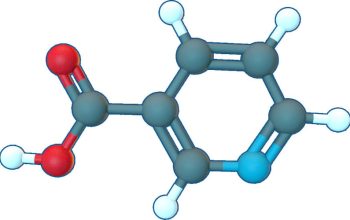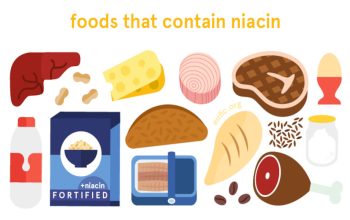Niacin Part 3: Safe and Effective for Vibrant Health
Meagan Purdy, ND interviews Dr Michael Joseph, DFM, PhD, MS on the historical and present-day use of niacin and how it supports multiple biochemical processes, including mental health functions.
Here is a link to Part 1
And Part 2
Interview with Michael Joseph, DFM, PHD, MS, PART 3
Meagan: It sounds like niacin deficiencies may be more common than many of us perceive. What are some symptoms or conditions for which you utilize niacin supplementation with good results, but that other practitioners may not immediately think of? Where are some places that niacin really shines clinically? With which cases should we consider it in our treatment plans?
Dr Joseph: I honestly can’t think of a single case where niacin doesn’t shine. Let’s make a comparison between human deficiency diseases and animal deficiency diseases. I’ll use cats as an example. Cats don’t make their own taurine, an amino acid that humans easily convert from other amino acids. Cats are susceptible to a variety of diseases due to taurine deficiency. It wasn’t until the supplementation of cat food with taurine that these diseases become clearer. In veterinary medicine, it seems like almost every issue with cats comes back to that taurine deficiency. It can lead to diseases of the eyes, immune system, joint diseases, and susceptibility to infections. We can extrapolate that to humans and look at vitamin B3 or niacin, vitamin C, and perhaps magnesium and a few other deficiencies. There are several nutrients that are so essential to proper human function, and niacin is one of the most important ones. When someone comes to me and tells me they’re having issues, the first thing I ask is how much vitamin B3 they’re taking. Usually, the answer is a multivitamin, or that they get vitamin B3 from their food or none at all. I usually start there and supplement niacin along with vitamin C because the two intimately connected.
What I really would love to highlight in this interview, since we can’t talk about everything, is the immediate effect niacin supplementation can have on mental health. Niacin has benefits for anxiety, depression, bipolar disorder, schizophrenia, addiction, and more.i,ii Even memory is dependent on vitamin B3.iii Sometimes people say that they’ve tried niacin but it didn’t work for them, but they’ll almost always report that they’re taking small amounts, like 60mg or 100mg. Dr. Abram Hoffer, the father of orthomolecular medicine for mental health, puts the niacin supplementation range for mental health issues between 3 and 9 g. My recommendation is 1,500 mg per day of niacinamide as we can dose niacinamide higher because it doesn’t induce a flush but still has profound effects on mental health. We have to supplement at a therapeutic range for B3 to truly be as effective as we want it to be.
Meagan: Besides the famous flush, what side effects should we be aware of with niacin supplementation in these ranges?
Dr Joseph: There are some reports of niacin elevating liver enzymes. There is also some reporting that niacin can elevate blood sugar. Clinically, not only have I not experienced this, I’ve experienced the opposite effect with some of my diabetic patients.
Meagan: Do you typically use liver support when supplementing with niacin?
Dr Joseph: Many practitioners will be wary of niacin because they’ll see liver enzymes go up when someone is taking higher doses of niacin. I personally do not add in liver support with niacin unless someone has an existing condition that requires it. Each practitioner has their own methodology and interpretations, so clinicians can choose the best path for their patients individually. If someone is working with someone with liver issues, they’re going to want to use liver support regardless of whether they’re using niacin. I have found no evidence that niacin has any adverse effect on the liver; elevated liver enzymes due to niacin intake is harmless and no indication of disease. In fact, niacin is extremely healthy for the liver and it improves its function.
Meagan: Any clinical pearls that you’d love to add in for those of us curious about niacin or inspired by this interview?
Dr Joseph: Physician, Heal Thyself. If you have never used niacin before or you’ve been scared off by the flush, start using it now. This is what Dr. Abram Hoffer, along with other proponents of orthomolecular medicine, has said. If you want to learn how a nutrient works, you’ve got to consume it. I will say that there is not a nutrient that has improved my own psychology, attitude, mental well-being, or even joints more than niacin.
Right now, I’m at the peak of my flush, and this is the key to understanding what it does. I took this niacin on purpose to flush during this interview to show you that not only do I talk the talk, but I also walk the walk. There are times where a health practice can be so stressful. The world is stressful right now. A lot of people will turn to alcohol, drugs, food, or something to distract them. What I turn to is niacin. There are very few nutrients that can have the same effect on stress management as niacin. The only one close is vitamin C because adrenal glands and the regulation of stress are hyper-dependent on vitamin C. Vitamin C, however, is also involved in niacin conversion, so I tend to recommend taking both at the same time.
This leads to another pearl: we should always supplement niacin with vitamin C. The two go hand in hand. If you want to study these two nutrients, you have to take them yourself and experience the flush, the health benefits, and learn how to dose to bowel tolerance when it comes to vitamin C. You must understand your own biology and physiology to help understand the biology of your patients.
I got into this line of work because I wanted to get well. Now, drawing from my experience, I teach people what I do. If you want to get your patients healthy, you’ve got to do it for yourself. If you can get yourself and your family healthy, you can then help others as well.
If your patients are well, they’re now your peers, and then you can do the real work. Once they’re at ground zero, they’re thinking of things they want to do, and you have the tools to give them the capability to achieve their dreams and goals. You’re freeing them from deficiency and the biological roadblocks standing in their way. The average age of my patients is 74. I’m of the opinion that age is just a number. The sky is the limit. If your patients are utilizing these nutrients, they’re going to feel better and they’re going to get more ambitious. We start out as practitioners and then, along the way, we turn into life coaches, advisors, guides, and of course, life-long friends.
There are three principles that I want to share here that were a part of my recent thesis. They apply to niacin, vitamin C, diet, and everything that we do with people. The first one is Find the Deficiency First. The second one is The Cure Denotes the Cause. And the third is No Healing Can Happen in the Presence of Deficiency. I’m putting these out there and you can interpret them how you like. If someone needs chiropractic care but is dying of dehydration, are you going to give them chiropractic care first? No, you’ll give them a glass of water. Then, after that, chiropractic can work. Then acupuncture can work. The same goes with all other nutrient deficiencies. We must address deficiencies before other treatments if we desire to truly heal our patients.
Additional sources to explore:
Hoffer A, Walker M. Putting It All Together: The New Orthomolecular Nutrition. New York: McGraw Hill; 1998. Hoffer A, Saul AW.Orthomolecular Medicine for Everyone: Megavitamin Therapeutics for Families and Physicians. Laguna Beach: Basic Health Publications; 2008.
Hoffer A, et al. Niacin: The Real Story: Learn About the Wonderful Healing Properties of Niacin. Laguna Beach: Basic Health Publications; 2015.
Hoffer A, Walker M. Orthomolecular Nutrition: New Lifestyle for Super Good Health. New Canaan (CT): Keats Publishing; 1978.
Clay K, et al. The Rise and Fall of Pellagra in the American South. The Journal of Economic History. 2019;79(1):32-62.
Savvidou S. Pellagra: ANon-Eradicated Old Disease. Clinics and Practice. 2014 Mar 27;4(1):637. Boseman, V. How Yankees Fostered Southern Disease [Internet]. McClellanville (SC): The Abbeville Institute; 2019 [cited 2021 Dec 17]. Available from: https://www.abbevilleinstitute.org/how-yankees-fostered-southern-disease/
i Lim SY, et al. Nutritional Factors Affecting Mental Health.Clin Nutr Res. 2016;5(3):143-52.
ii Xu XJ, Jiang GS. Niacin-respondent subset of schizophrenia – a therapeutic review.Eur Rev Med Pharmacol Sci. 2015;19(6):988-97.
iii Sanford AM, Flaherty JH. Do nutrients play a role in delirium? Curr Opin Clin Nutr Metab Care. 2014;17(1):45-50.
Stay tuned to Druglessfunctionalmedicine.com for more info on important topics like this!




